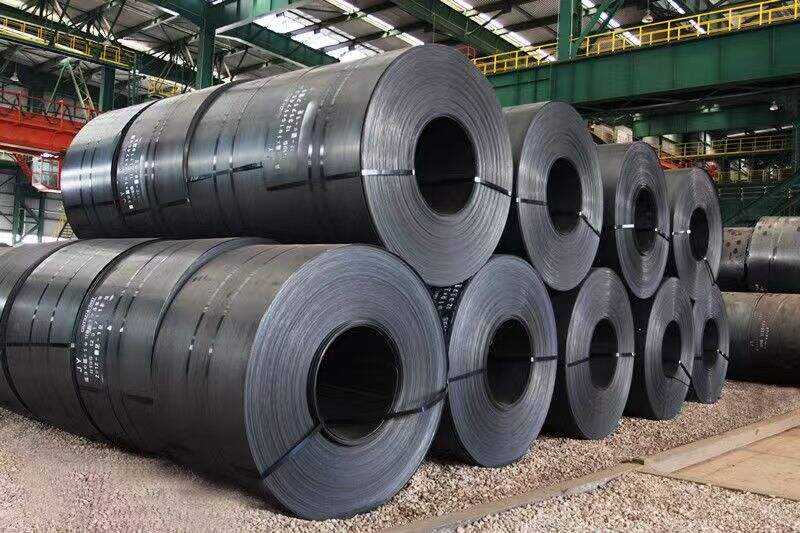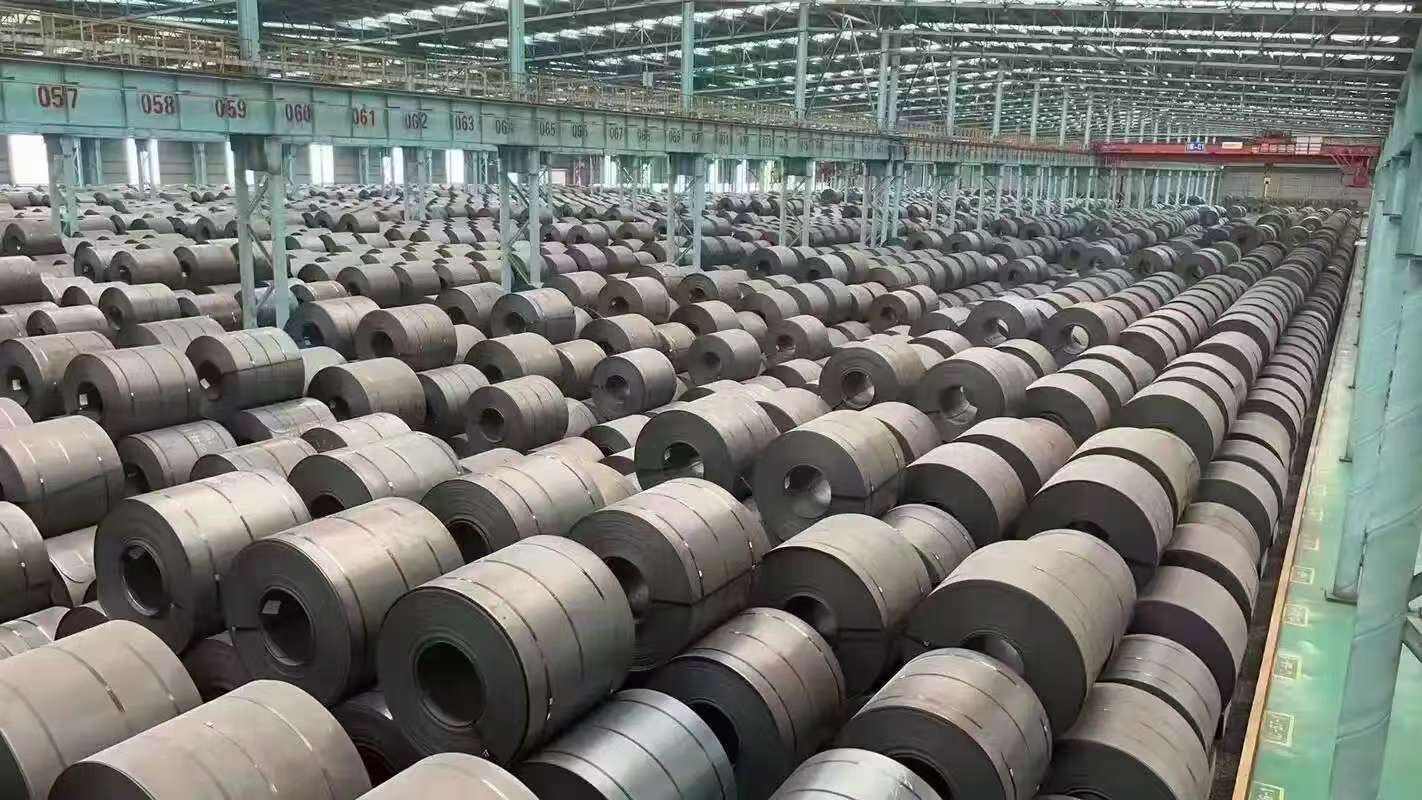The Structural Superiority of Heat-Processed Steel in Industrial Applications
Heavy-duty manufacturing operations demand materials that combine exceptional strength with economic viability, making hot rolled coil the preferred choice for engineers and fabricators. This versatile steel product undergoes a high-temperature rolling process that enhances its mechanical properties while maintaining cost-effectiveness for large-scale production. Hot rolled coil delivers the perfect balance of durability, formability, and consistency required for components that must withstand extreme forces and harsh operating conditions. From mining equipment to offshore platforms, manufacturers rely on hot rolled coil for critical structural elements where failure is not an option. The material's unique characteristics address the specific challenges of heavy industrial applications better than alternative steel products.
Unmatched Mechanical Properties
High Strength-to-Weight Ratio
Hot rolled coil provides an optimal balance between structural strength and material weight that cold-rolled alternatives cannot match. The heat treatment during rolling develops a fine-grained microstructure that enhances yield strength without adding unnecessary mass. This property proves critical for mobile heavy equipment where every kilogram impacts fuel efficiency and payload capacity. Manufacturers of construction machinery use hot rolled coil for boom arms and chassis components that must resist bending under dynamic loads. The material's inherent toughness allows for lightweight designs without compromising safety margins in load-bearing applications. These characteristics explain why hot rolled coil dominates the production of earthmoving equipment and material handling systems.
Impact Resistance and Fatigue Strength
The thermal processing of hot rolled coil creates superior impact absorption qualities essential for heavy machinery operating in punishing environments. Mining equipment fabricated from hot rolled coil withstands the constant shock loads from rock collisions and uneven terrain. The material's fatigue resistance prevents crack propagation in components subject to repetitive stress cycles, such as crane booms and excavator arms. Unlike brittle alternatives, hot rolled coil maintains ductility at low temperatures, making it suitable for arctic drilling equipment and cold storage machinery. Manufacturers value how hot rolled coil components often outlast the equipment itself, reducing lifecycle replacement costs in capital-intensive industries.

Manufacturing Process Advantages
Cost-Effective Production Scaling
Hot rolled coil's continuous manufacturing process allows for economical production of large-volume orders needed in heavy equipment manufacturing. Steel mills can produce coils up to 40 tons in weight with consistent properties throughout the entire length. This scalability provides OEMs with reliable material supplies for extended production runs without quality variations. The hot rolling technique consumes less energy per ton than cold rolling, keeping material costs competitive for price-sensitive industrial sectors. Fabricators appreciate how hot rolled coil arrives ready for immediate processing, eliminating the need for additional heat treatment before fabrication. These production efficiencies make hot rolled coil the most economical choice for high-tonnage manufacturing applications.
Superior Formability for Complex Components
Heavy equipment manufacturers exploit hot rolled coil's exceptional formability to create complex structural shapes with minimal processing. The material readily adapts to press braking, roll forming, and stamping operations that would challenge cold-rolled steels. Fabricators can produce large-radius bends and deep-drawn parts without risking material failure or excessive springback. This formability allows designers to consolidate multiple parts into single hot rolled coil components, reducing assembly time and improving structural integrity. The agricultural machinery sector particularly benefits from this capability when manufacturing curved plowshares and contoured harvester components. Hot rolled coil's forgiving nature during forming operations reduces scrap rates and improves production yields.
Durability in Extreme Conditions
Corrosion Resistance for Harsh Environments
While hot rolled coil requires protective coatings for severe exposure, its dense oxide layer provides better inherent corrosion resistance than cold-rolled steel. The mill scale that forms during cooling creates a temporary barrier against moisture penetration until final finishing. Heavy equipment manufacturers often specify hot rolled coil for internal structural components where some surface oxidation is acceptable. In mineral processing plants, hot rolled coil withstands abrasive and mildly corrosive conditions better than alternative materials at similar price points. Properly maintained hot rolled coil structures in industrial settings routinely deliver 30+ years of reliable service despite constant exposure to operational stresses.
Thermal Stability Under Load
Hot rolled coil maintains its mechanical properties across a wider temperature range than cold-worked steels, making it ideal for high-heat industrial applications. The material demonstrates consistent performance in furnace components, kiln cars, and other equipment operating near 600°F. Unlike cold-rolled products, hot rolled coil won't experience stress relief distortion when exposed to elevated temperatures during service. Power generation equipment manufacturers rely on this thermal stability for boiler supports and turbine housings subject to cyclical heating. The material's predictable expansion characteristics allow for precise engineering of components operating in variable temperature environments.
Supply Chain and Availability
Reliable Material Sourcing
The widespread production capacity for hot rolled coil ensures stable supply chains for heavy equipment manufacturers worldwide. Multiple steel mills across continents produce hot rolled coil to standardized specifications, preventing single-source dependency. The material's commodity status allows for flexible procurement strategies, including just-in-time delivery for lean manufacturing operations. Large OEMs maintain consistent quality across global production facilities by sourcing hot rolled coil from vetted international suppliers. This supply reliability proves critical for industries like shipbuilding and bridge construction that operate on tight project timelines with heavy penalty clauses for delays.
Standardized Material Specifications
Hot rolled coil benefits from well-established international standards (ASTM, EN, JIS) that guarantee consistent performance characteristics. Engineers can specify hot rolled coil with confidence, knowing mechanical properties will match design calculations exactly. The material's certification documentation simplifies quality control processes in heavy manufacturing sectors with strict compliance requirements. Standardized sizing and grading allow for interchangeable use of hot rolled coil from different producers without performance compromises. These specification advantages reduce engineering overhead and prevent project delays caused by material qualification processes.
FAQ
How does hot rolled coil perform in welded structures compared to other steel forms?
Hot rolled coil exhibits superior weldability with minimal preheating requirements and reduced risk of heat-affected zone cracking compared to cold-worked steels, making it ideal for heavy fabrications.
What thickness range is available for heavy-duty applications?
Hot rolled coil for industrial use typically ranges from 1.5mm to 25mm thickness, with specialized mills producing up to 50mm thick coils for extreme-duty applications like mining truck frames.
Can hot rolled coil replace forged components in heavy machinery?
While not suitable for all applications, properly engineered hot rolled coil assemblies often replace forged parts in non-critical load paths, offering significant cost savings at comparable strength levels.



